When world-renowned Swiss sculptor, Not Vital (pronounced Veetahl) was 15-years-old, he asked his father, a timber merchant, to cut down a number of trees to isolate one tree in particular. He then stood behind it and moved to remain in its shadow throughout the rest of the day with his father photographing him every 15 minutes to document the work.
This form of land art marked the beginning of a 45-year career that has also embraced painting and architecture as well as sculpture and he has seen his work exhibited in eminent places throughout the world. Now, the Yorkshire Sculpture Park (YSP) is staging Vital's first major exhibition in the UK comprising works made during the past two decades.
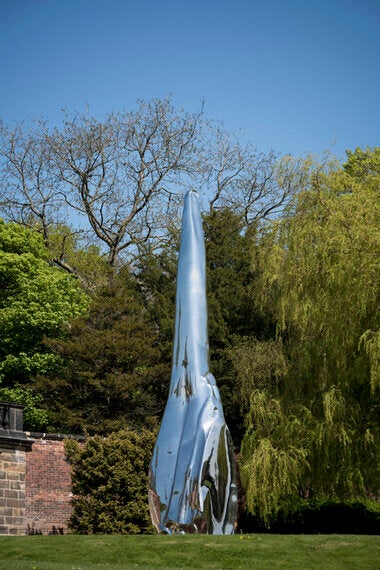
Tongue (above), is a depiction of a magnified, elongated cow's tongue, situated in the YSP's Bothy Garden so that it can be seen, glinting in the sun if you're lucky, from the other side of the 550-acre park.
"He is someone who engages with the natural world which is important for us at YSP," says its Director of Programmes, Clare Lilley. "Working with him is like working with an alchemist. He can turn ordinary materials into something extremely precious."
Tongue is a potent symbol - phallic and totemic - but with sensual, undulating curves when you see it up close. It says a lot about the artist.
Vital has a close affinity with animals and nature that stems from his upbringing in the remote Engadin region of the Swiss Alps. The palette of his work reflects the silver, black and white of the mountains he grew up beside. It's a tight, close community where Romanche is the spoken language.
Yet, Vital has spent a nomadic life making art in numerous countries including Italy, the United States, Chile, Niger, Laos, the Phillippines, Brazil and China. In each place he settles, he exploits the skill of artisans there to create sculptures from local materials.
"For us, travelling was normal, it was a way of survival," Vital tells me. "If you have your doors wide open, you can embrace many different activities."
Such examples of these activities include working with Tuareg silversmiths in Niger, with ceramic master craftsmen in Jingdezhen in China, carved marble workers and glass-blowers in Italy, chased steel artisans and from China, and paper makers from Laos. Examples of all these handmade skills are on show in the park.
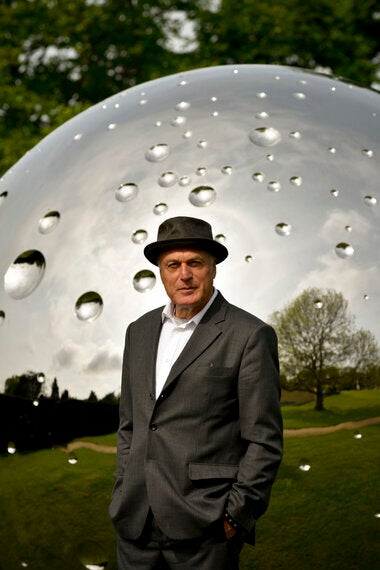
Moon (above) shows the artist with his spherical, stainless steel work that's highly polished to reflect the environment in which it's placed in the same way as he has absorbed the nuances of culture in the places he visits. Produced by Beijing craftsmen, each crater is based on photographs of the moon and produced separately before being welded into the main structure.
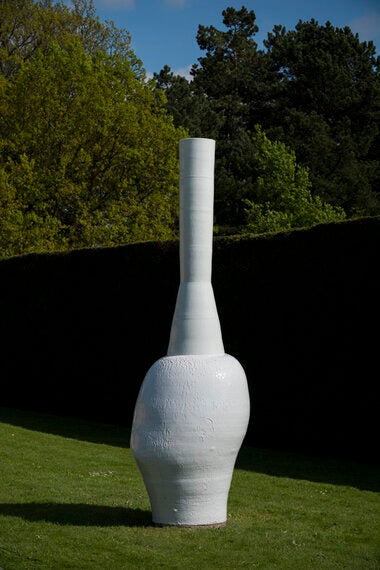
One of a series of Heads (above) is also made in China but in the porcelain capital of Jingdezhen. They are monumental in size - a challenging technical feat - and represent a symbolic head on top of which stands the type of chimney once prevalent in the many coal-fired kilns in the city but which have become redundant with the onset of gas and electricity.
The friendships he makes with artisans who facilitate his work is, to Vital, a two-way affair.
"How it works is if you meet someone say in Africa who is building a house out of mud, you try to push him to extremes. So I've been building a house that is four storeys high, something that never happens in the whole of west Africa. So by pushing them to the limits, it also gives them the chance to achieve something difficult, so you both learn."
The YSP curators take pride in being able to find the best places to exhibit the works. The objects add to an already beautiful landscape of rolling hills around a man-made lake on what was once an aristocratic country estate. Heads and Moon both grace the Gallery Lawn.
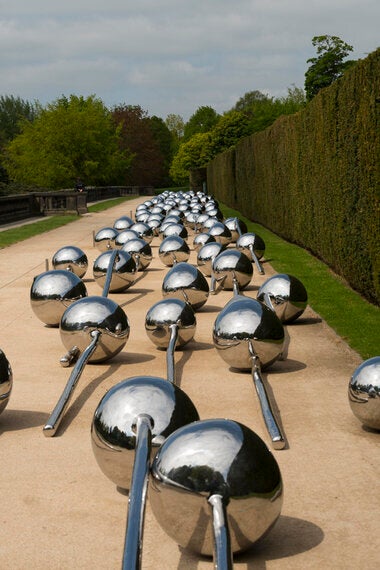
Most spectacularly, Let 100 Flowers Bloom (above) lie on the Formal Terrace. These lotus buds, again made in China from chased steel, appear ready to ripen yet are held permanently in stasis. They refer to Mao Zedong's 1956 campaign of the same name to encourage opinion about his reforms only subsequently to mete out retribution to those who dared criticise him.
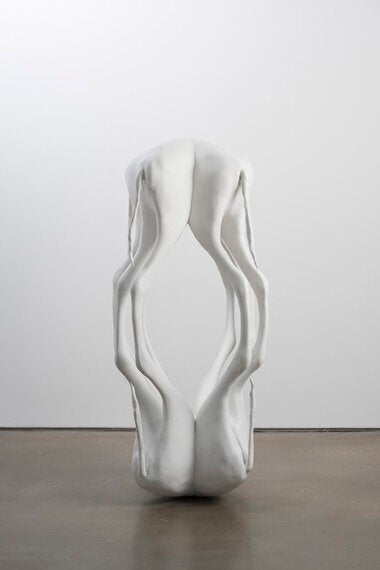
In the summer, an aluminium bridge by Vital will become a permanent feature in the park. Another aluminium work, Eight Halves (above) is a delicate, part surreal work featuring the hind quarters of a deer with its spindly legs seen with mirror image.
Once again, it's another example of a work that reflects the symbiosis between animals and people inherent in his roots.
Clare Lilley believes Not Vital's ability to foster close working relationships with people of varying cultures sets him apart.
"What I find amazing about him is that I know that working with people is one of the most difficult things of all ...yet Not manages to exert such a light touch and tread very softly that the works almost magically come into being."
Not Vital's exhibition runs at the Yorkshire Sculpture Park, near Wakefield until 2 January 2017.
The images are courtesy of Jonty Wilde and are used with the permission of the artist and the YSP.